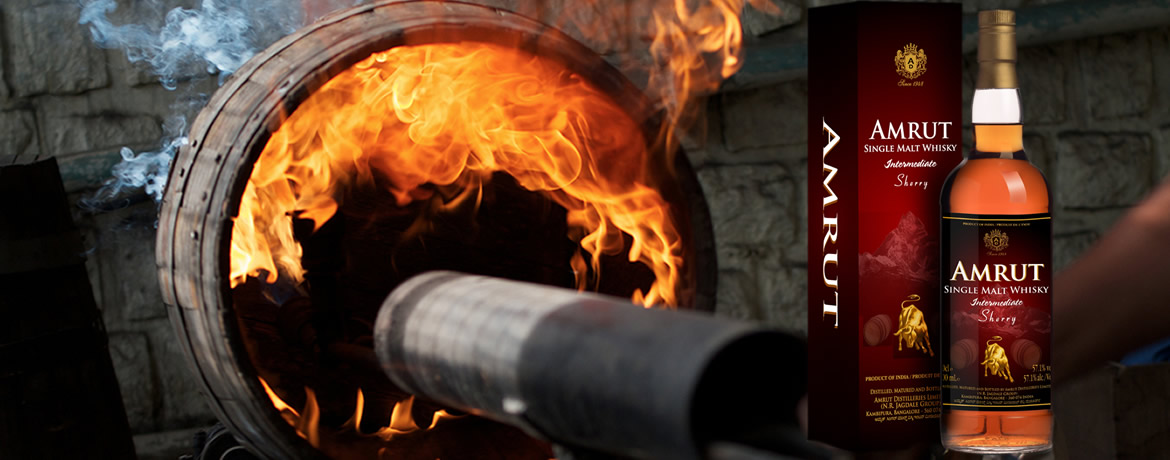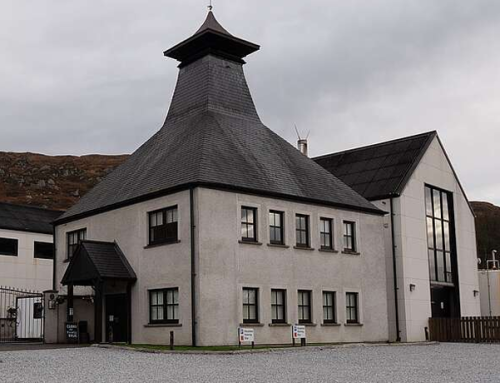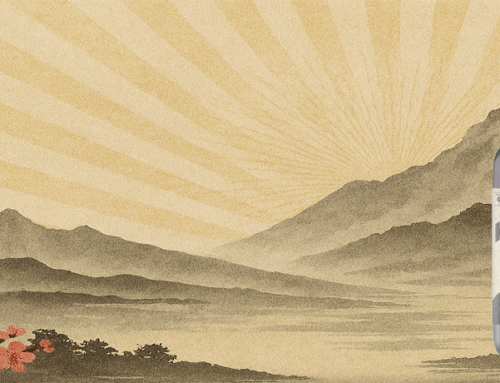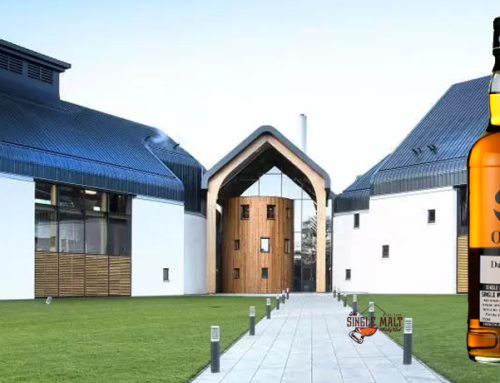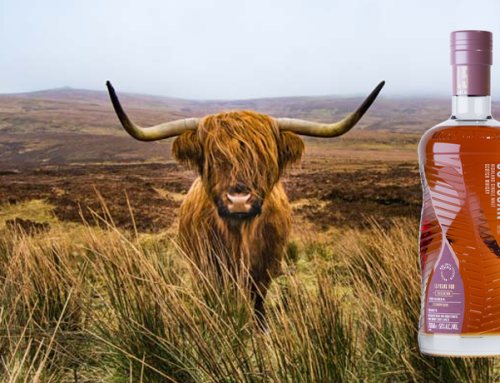For August, we try a cask strength bottling from India – the Amrut Intermediate Sherry.
According to Indian Mythology, when Gods and Rakshasas – the demons – churned the oceans using the mountain Meru as churner, a golden pot sprang out containing the Elixir of Life. The elixir was called the “Amrut” and this is where Amrut Distillery gets it’s name.
Amrut is 3,000 meters above sea level (Kosiosko is only 2,228m), so despite being equatorial is relatively cool. The company prides itself on its innovation, and the Amrut Intermediate Sherry is no exception. The pure spirit is initially aged in new american oak and ex bourbon barrels. It is then transferred to ex Sherry butts where it ages for at least a year, then is finally finished in ex bourbon barrels again.
The result is a whisky with characteristics of both Sherry and bourbon, bottled at full cask strength of 57.1%abv, with no chill filtering and according to Jim Murray scores 96.5.
Colour is driven by the bronzed Sherry butts, with some depth of colour attributable to the high alcohol content.
The nose is dominated by the Sherry, with rich prunes and dates.
There is sultanas and raisins, rich apricot and orange zest, from the Sherry, combined with vanilla, honey and caramel from the charry bourbon barrels with the flavour of the new oak underlining the primary flavours.
Despite the cask strength warmth, the Amrut Intermediate Sherry is remarkably balanced. The initial rich dried fruits are tempered by the honey and vanilla, all of which swirl around the palate long after.
I’d definitely recommend trying this whisky with a few drops of water to ‘open’ the whisky up. It really brings out the vanilla laden fruit and tempers the alcohol. Just a few drops [of water] – no more than a dribble. Watch the reaction as the water hits the whisky! Ahh.. magic! – Brad.
DISTILLERS NOTES
Bottle Size : 700ml
ABV : 57.1% abv
Region : India
Peated : No
Colour: Golden Yellow
Nose: Instead of the usual biscuit aroma, we now get moist cake. And my word: is it fruity and spicy!! Love the freshly waxed oak floor, too. Brain-explodingly complex and multi-layered with one of the most intriguing sherry-style-bourbon-style marriages on the market
Taste: Cracking delivery and entirely unique in form. The structure is decidedly oak-based, but acts as no more than a skeleton from which the juicy sultana and spices drape. Salivating, too, as the barley kicks in powerfully. But the liquorice-orangey-honeycomb bourbon theme quietly shapes the flavour profile; the spices pulse and glow
Finish: Quite a chunk of natural caramel quietens the more exuberant characteristics; long and elegant
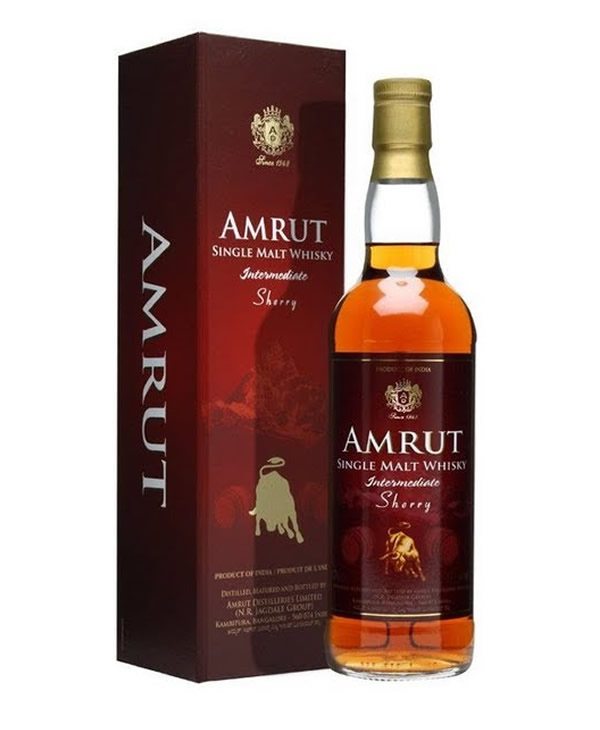
ABOUT THE DISTILLERY
The Amrut Distillery has been led by successive generations of the Jagdale family since it’s foundation in 1948. Situated in Bangalore, Amrut has produced gin, rum, vodka and brandy, as well as supplying alcohol to industry and the military.
Although a well established – and huge with over 1000 employees – distillery, Amrut is a relative newcomer to the world of single malt whisky. It’s first expression launched in 2004 to a skeptical audience in Glasgow, Scotland. 5 years later, Jim Murray proclaimed the Amrut Fusion expression the third best whisky in the world and scored it 97/100. Amrut Fusion has since gone on to win accolades over progressive years proving that first bottling was not a fluke.


So how the rapid development you may ask? Well apart from the knowledge and skill of the people developing the whisky, the Indian climate has a lot to do with it. Whisky matures much faster in the Indian climate than it does in Scotland. The temperature and humidity being the main factors in this difference. In fact, whisky matures four to five time faster in this climate than in Scotland. An interesting fact illustrating the difference in the aging process is the difference in Angel Share between India (10-15% loss per year) and Scotland (2% loss per year). This ‘rapid aging environment’ allows the distillers to experiment and hone their craft far quicker than in a ‘traditional’ climate.
